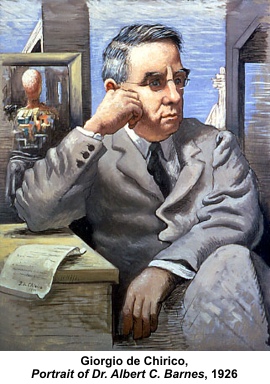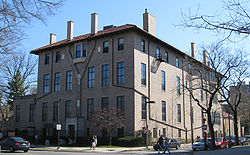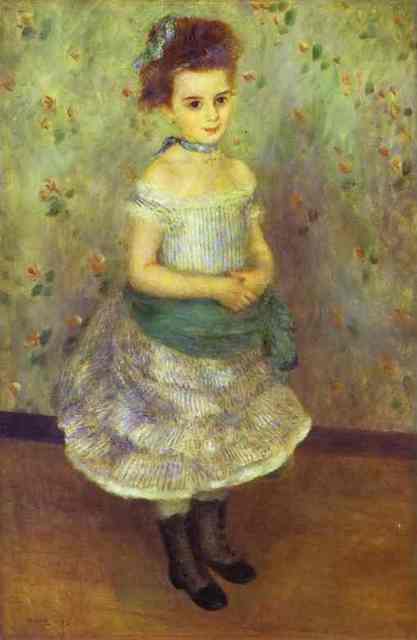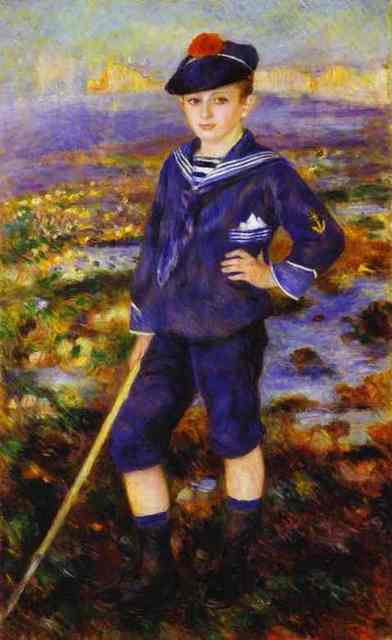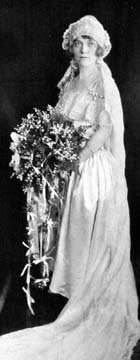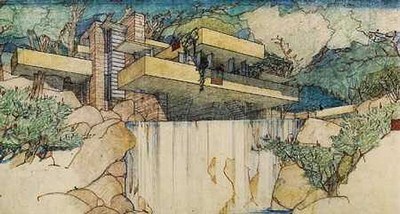
Is anything so nearly perfect, so reliably, repeatedly sublime, that it deserves to be preserved, as-is. for people yet unborn to experience the same joy that we know now? Can one fix some exquisite entity, as it were, in amber, immune from changing fashion and unsusceptible to the contamination of the whims of the insistent rich? Must someplace, anyplace, however satisfying, grow and change, or die. Is even Falling Water unsafe from threat?
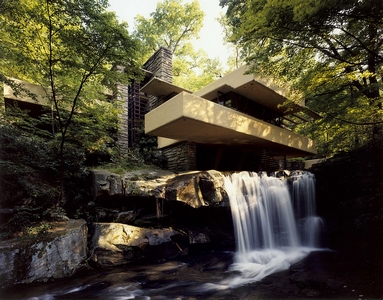
As we grow older, inevitably, one or another of two opposing biases deepens: either one becomes inclined to trivialize the lasting value of all things, as ephemeral and replaceable, like youth and beauty, or one becomes ever more hardened toward having special places one loves, arbitrarily altered and diminished.
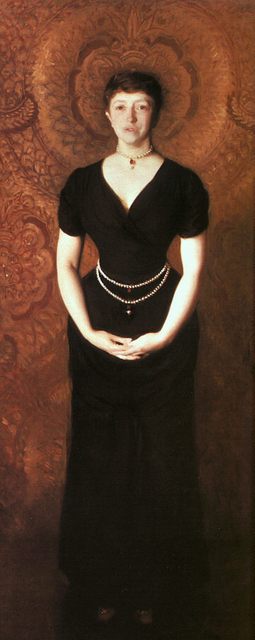
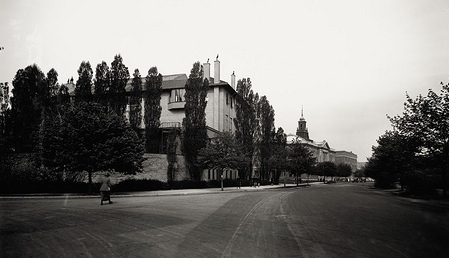
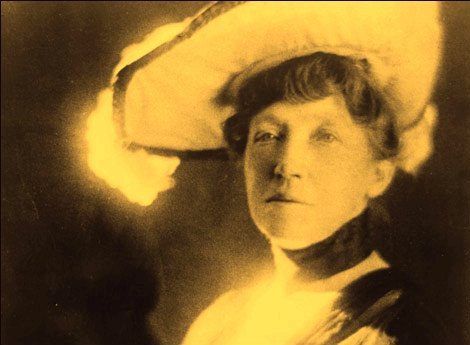
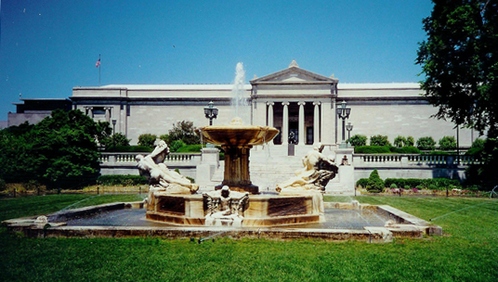
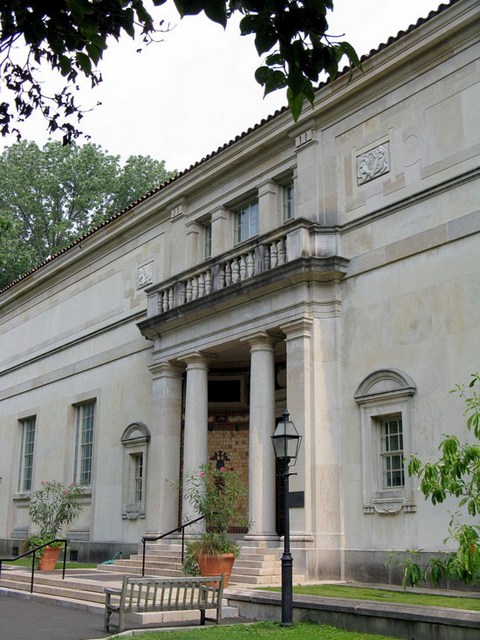
This then I suppose must be what accounts for the depth of my despair, anger and disgust over dramatic changes at Fenway Court, the Venetian palace-like museum devised by Isabella Stewart Gardiner in Boston, at the Cleveland Museum of Art, and most critically, at the Barnes Foundation gallery, built in 1925 at Lower Merion Township, Pennsylvania from designs by notable architect Paul Cret.
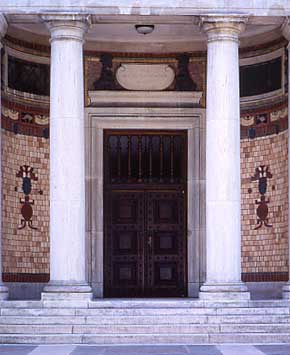
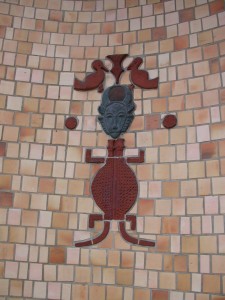
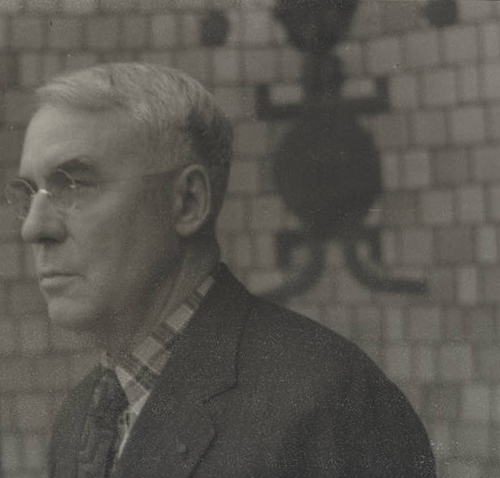
Dr. Albert Barnes, founder of the Barnes Foundation
Celebrated among aesthetes, the Barnes Foundation comprises a private collection groaning with manifold treasures among which are found African sculptures, Asian prints and Native American ceramics. The foundation even owns an early American farmhouse replete with regional vernacular decorative arts. A surrounding 12-acre arboretum is lush with rare exotics from around the world. Low-scaled, the Barnes' subdued neo-Classical exhibition building takes the form of a 16th Century Mannerist palazzo with striking African ornaments at the entrance.
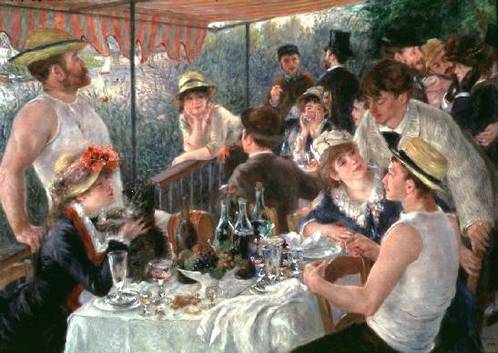


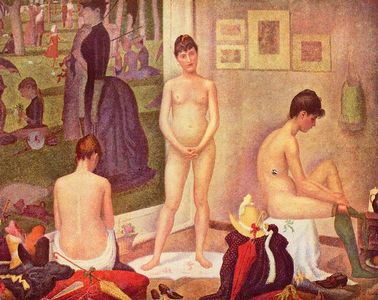
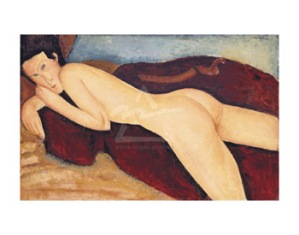
However, it is iconic post-Impressionist and early Modernist paintings, 181 Renoirs, 69 Cézannes, 46 Picassos 59 Matisses, Modiglianis, Degases, Manets, Monets, Van Goghs and others which account for the fabled status of this unique institution. Esteemed objects of such quality, in so great a quantity are no less unusual than their individualist collector's purpose. Barnes' varied assemblage was meant to be the mainstay of a school promoting a philosophy of the universality and transformative nature of art, high and low, irrespective of time or space.
For a very long period, every significant American accomplishment was measured against what was done, or what had been done, long before, and far-away, by Europeans. Artistically, even after most commercial, industrial and engineering practices in the United States surpassed anything found abroad, deference to an assumption of old-world superiority persisted. A hundred years ago conservative well-to-do Americans indeed, often went to the extreme of creating houses and museums evocative of exceptional foreign examples from the distant past.
They had been taught that an aristocratic tradition underlying venerable French chateaux, Italian villas and English manor houses, made the architecture of such buildings impossible to equal in aesthetic terms, with anything new, produced here by Americans. Going so far as to emulate manners and mores derived from a noble heritage, many also imagined that by approximating some centuries-old British or continental landmark, that they could help to enlighten and elevate the intellects of ordinary people who would never travel to see the world's architectural wonders first hand.
Convinced of the pre-eminence of European culture though they were, not unlike18th Century English imperialists, eager to emulate the glory that was Rome, America's business class of a century ago was certain of their epoch's technological advance. Moreover, they felt that anything worth-while from the past could be acquired or replicated, and often, in the process, greatly improved.
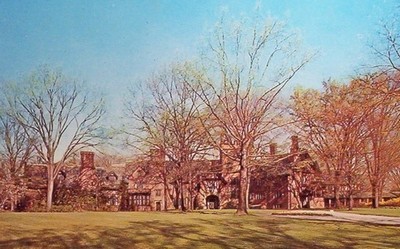
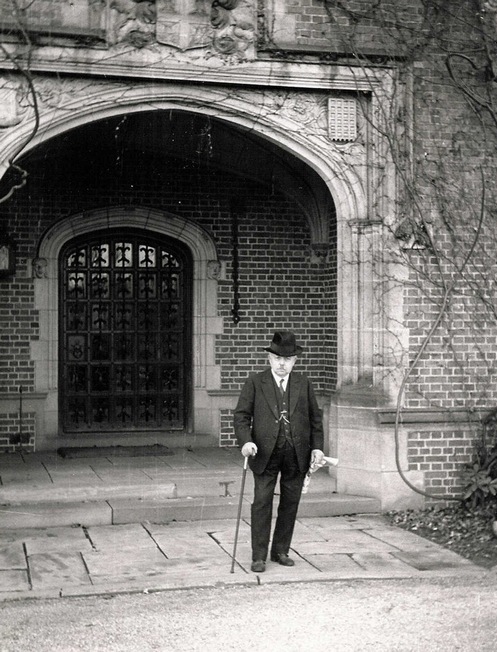
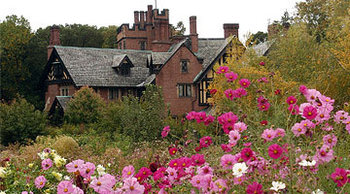
This role of art and architecture, not merely as a celebration of the Gilded Age equivalent of princes and other grandees by way of power, but of edifying everyday citizens and workers, most impacted me through Stan Hywet Hall, the onetime home of Goodyear Tire and Rubber Company founder, Frank A. Seiberling. Completed in 1915, today this 65-room homage to Elizabethan estates serves as a house museum. Starting at age 13 I was a volunteer tour guide there for 8 years. Endlessly exploring this unlikely 'mansion' and so meeting various Seiberlings, awakened me to a more nuanced appreciation of a world I had previously only known in movies and books.
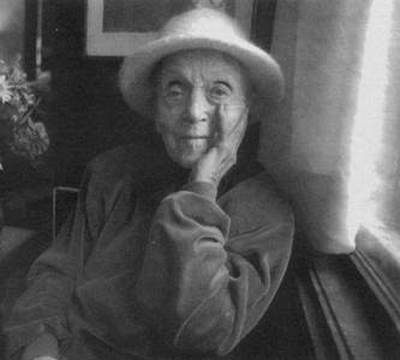
Irene, Mrs. Milton Whatley Harrison, the Seiberling's eldest daughter, lived in the gate lodge. Our birthdays were both February 25, except she was born in 1890. "Mr. Adams knows so much about history," she announced by way of explanation once, "that he must have lived before, in Tudor times!" How proud I felt having her say this.
Distraught by matrons embarrassed by fringed lampshades like their grandmothers' and eager to help perfect Stan Hywet via their own taste, more refined than the Seiberlings they imagined, I found it difficult to always be tactful. In danger of destroying Stan Hywet through misguided efforts to improve it, the ladies of the curatorial board certainly didn't think this adolescent Negro had some special knowledge due to a past life.
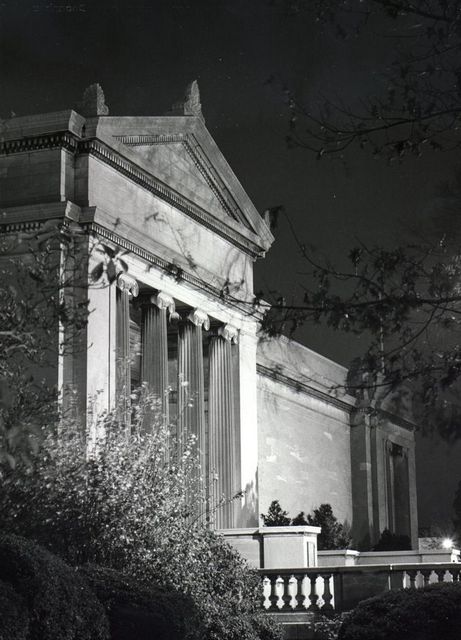
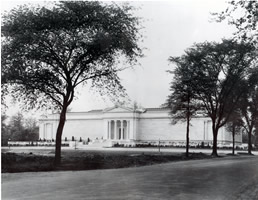
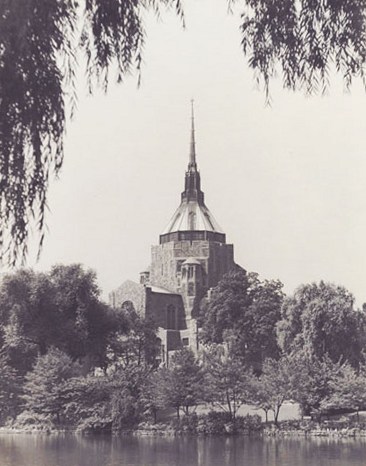

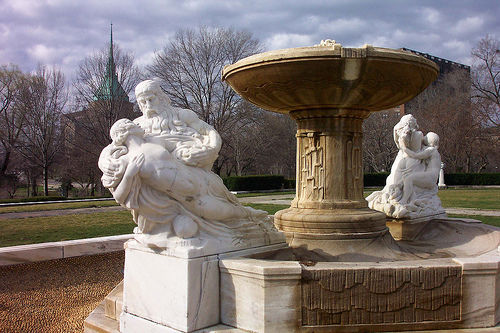

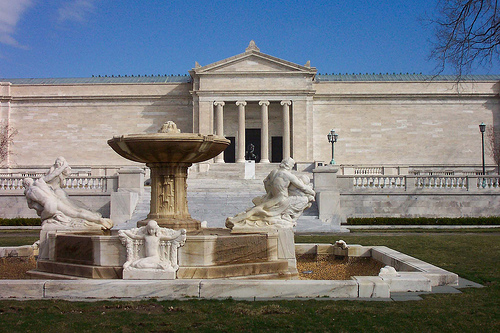
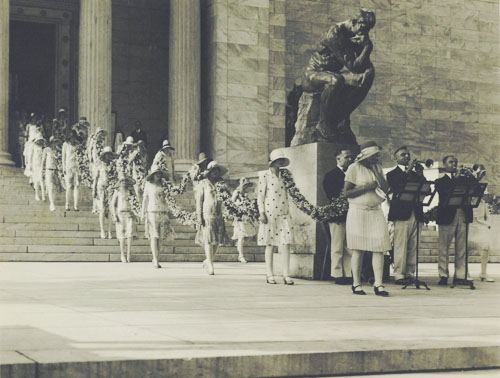
Thirty miles north, the Cleveland Museum of Art was the quintessential Greco-Roman temple, dedicated to Apollo, the muses, all that was lovely and sacred. Removed from the noxious atmosphere of industries that brought Northeastern Ohio fabulous wealth, the glowingly inviolate white marble structure stood isolated within a garden, designed by Olmstead Brothers, beside a small lake. All the buildings around this 'lagoon' similarly envisaged the triumph of Western cultural traditions. But, they and the garden were no more than a transitional prelude, like the exquisitely wrought golden setting of some rare, mammoth and magnificent multifaceted jewel, awaiting one within. At the base of the entry-stairs sat Rodin's Thinker like a sentinel secular deity.
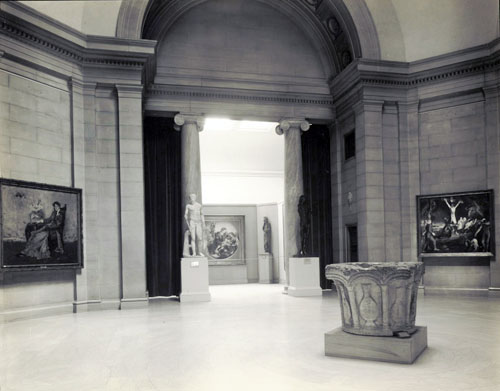
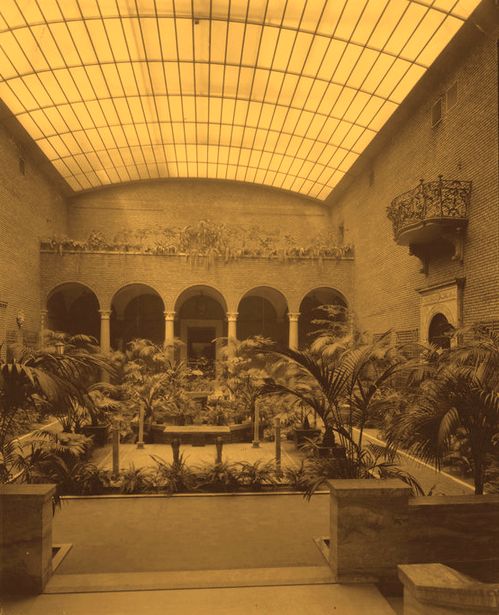
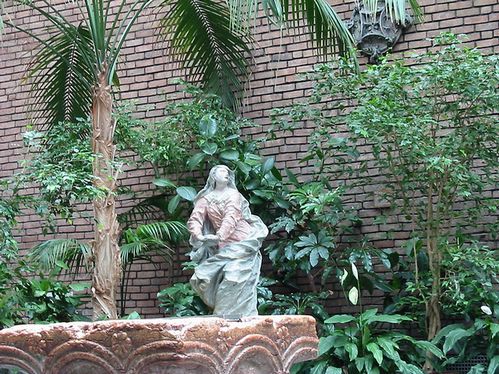
And, even here, beyond the purely ceremonial domed rotunda, two additional ritualistic spaces enabled the novitiate-visitor time to cast-off the travails of the world-of-worry without, in order to be more receptive to holy mysteries of a higher realm inside. The most crucial, down a few steps, was the brick-lined, top-lit garden court, suffused with light and furnished by an iron balcony and a scattering of architectural fragments enveloped by palms, ferns, ivy and rubber plants. A shallow pool at the center provided the echoing sound of tinkling water. Not long after the room's completion a large symphonic pipe organ was installed atop the arcaded loggia at the far end, so that sonorous, other-worldly music wafted through the galleries.
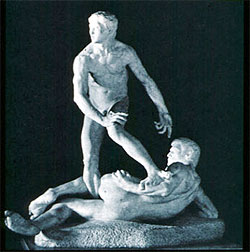
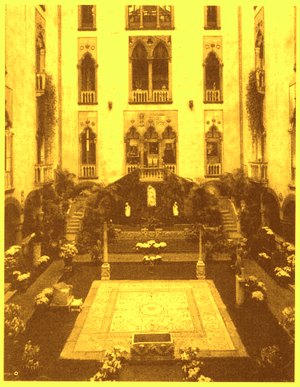
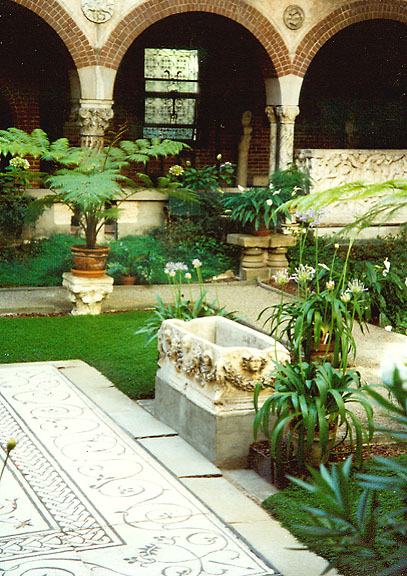
Obviously this retreat was modeled after sculptor George Gray Barnard's cloisters in New York City's Washington Heights at 190th Street, which were eventually purchased for the Metropolitan Museum of Art and moved. It was also indebted to Mrs. Gardner's glassed atrium at Fenway Court, where colorful potted flowers and scented blooming shrubs have always augmented the greenery.


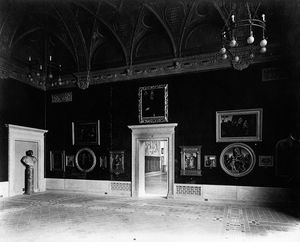
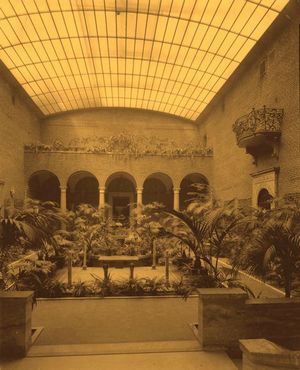

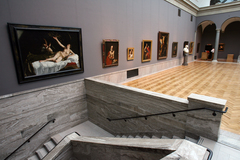
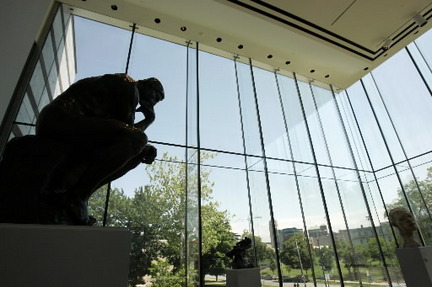
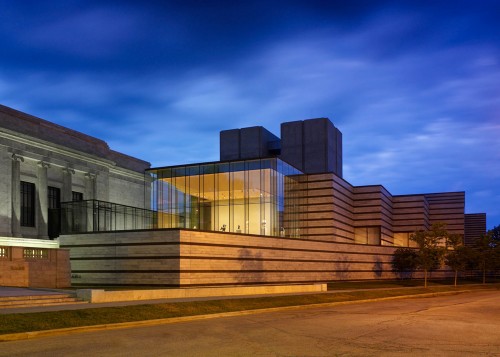
Ironically, it's the ego of today's most acclaimed 'starchitects' that has adversely impacted both places. Rafel Vinoly is the culprit in Cleveland. Much like the crass and shortsighted destruction of the Holden Gallery's programmatic neo-Renaissance embellishments a half-century ago, now it was the Garden Court's time to give way to 'greater artistic objectivity'. Vinoly's expansive envelopes made 'transparent', via enormous volumes of glass, are many of them meant to do double-duty as venues for fund-raising galas. In this regard they are all-but prophetic of vast operations deficits to come, as the museum trustees grapple with a guarantee of gargantuan heating and cooling costs that might have been avoided.
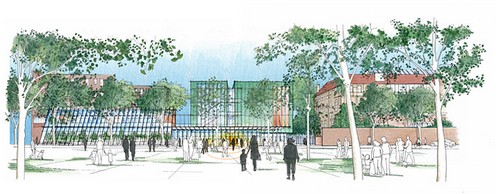
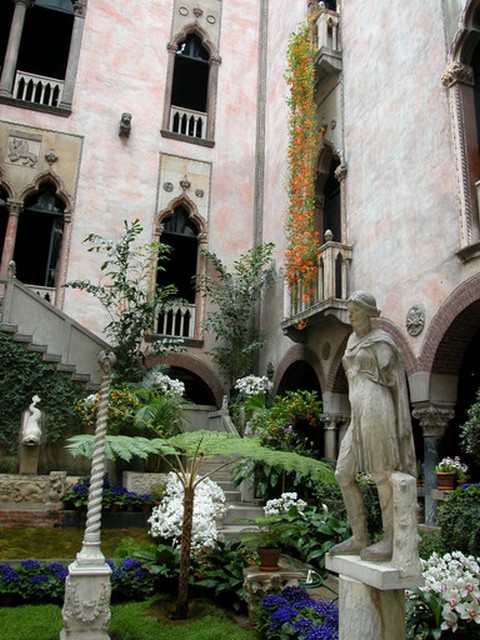
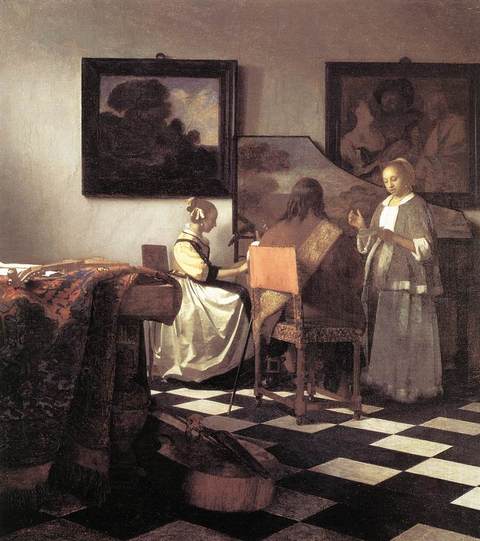
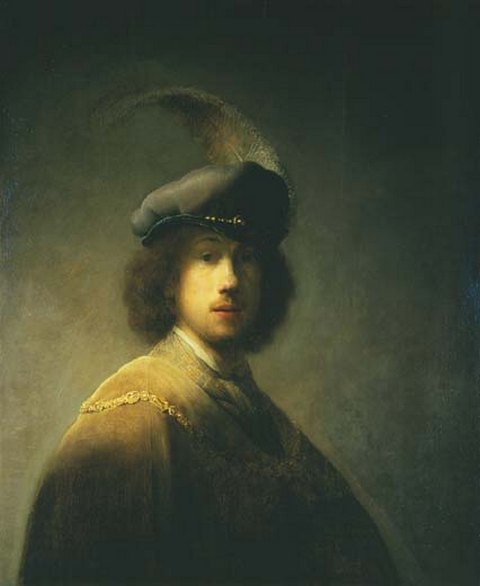


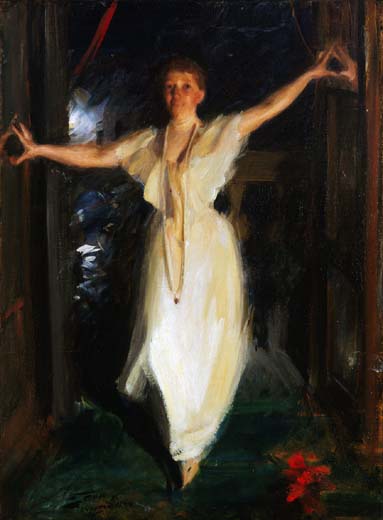
In Boston, Gardner officials boast that the museum is "unchanged but not stagnate." Thanks to Renzo Piano this is an understatement at best, since the very way one enters the museum and circulates has been totally altered. How well I remember my first time leaving the brilliant summer's sunshine, the noise of a baseball game in progress, entering into a low, relatively cool and hushedly quiet place...walking toward the softly splashing sound of water, brushing past an enormous tree fern, how exhilarating to see a sight that had made even proper Bostonians gasp with delight a century ago, one that makes me gasp now too, after half a dozen visits, over a distance of 25 years. Moreover, there were paintings upstairs of opulent grandeur, set off against remnants of Mrs. Gardner's old ball gowns . My favorite?...Titian's incomparable allegory with an unexpected crease down the middle. How reassuring it used to be knowing that Mrs. Gardiner's will stipulated that nothing at Fenway Court could be loaned, moved or changed.
In a letter, Robert Venturi, perhaps the nation's first 'starchitect', decries the $200-million project to move the Barnes' Foundation Collection to downtown Philadelphia's Benjamin Franklin Parkway. He criticizes it as what it is, "an indiscreet and ridiculous waste of money."
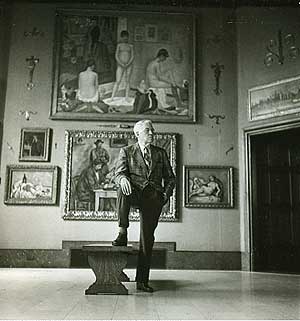
Albert Coombs Barnes (January 2, 1872 - July 24, 1951) was an American inventor and art collector. As a youngster, he attended Methodist revivals and 'Negro' camp meetings with his devout mother. Exposed in this way, so early, to black gospel and spiritual singing, Barnes developed a life-long appreciation for African American culture and creative expression.
Born into deep poverty, Barnes' struggles to better himself were incessant. In order to attend the University of Pennsylvania he even fought in boxing matches. In 1899 with a German student named Hermann Hille, Barnes developed a mild antiseptic to combat venereal disease in newborns. It was an immediate financial success, enabling him, soon after the turn of the century, at the age of 35, to buy out his partner and become a millionaire. A shrewd sense of timing meant he later sold his company before the stock market crash of 1929. However, he was hardly infallible.
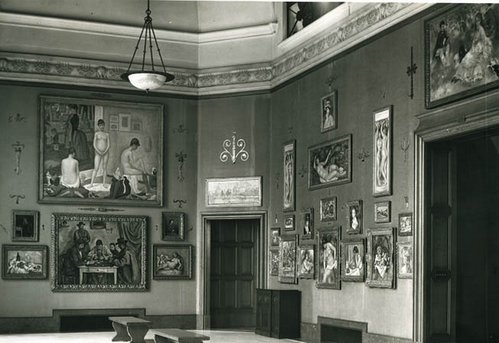
Notwithstanding the preoccupation art patrons like Henry Clay Frick had with reproducing on home ground antique European splendors, Barnes was attracted to the new. This resulted from his friendship with a former high school classmate, the painter William Glackens. At his friend's behest Glackens obtained 20 'modern' paintings in Paris that were to form the core of Barnes' collection.
In 1912, during a stay in Paris, invited to the home of Gertrude Stein, Barnes first met Matisse and Picasso. During the great Depression Barnes' excellent eye, expert advisors and ample funds enabled him to acquire important works at bargain prices. His first Picasso, for instance, was bought for under $100.

Barnes' antagonism toward orthodoxy and art history, which he said "stifles both self-expression and appreciation of art" were loudly stated and widely known. The initial public showing of his collection in 1923 elicited a response not very different from that befalling New York's Armory Show a decade earlier. Critical denouncements and brickbats only intensified a disdain for the art establishment and elite art connoisseurs. Barnes created his foundation and school, he said, not for the benefit of art historians, but for that of the students. Happy for interested but ordinary people to view his treasures, Barnes' policy of restricted hours at an out-of-the-way location were deliberate safeguards of a vision now due to be completely ignored. Requring two dozen plane trees to be felled, Tod Williams Billie Tsien Architects' new facility, occupying four times the area of the original, packed with noisy and indifferent tourists, will be utterly at odds with the self-selecting audience of inquisitive art lovers Dr. Barnes sought to cultivate.
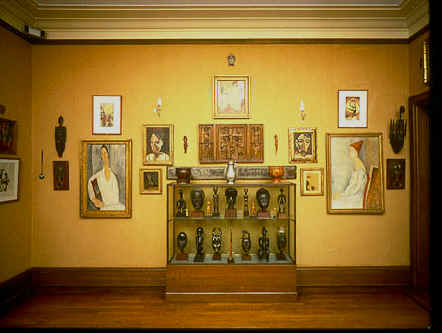
Opposed to curatorial and scholarly barriers between artwork and viewers, Barnes had his collection hung according to his own novel ideas. Identification was kept to a minimum, while paintings, furniture and finely crafted metalwork were juxtaposed in such a way as to reinforce highly original aesthetic relationships one might otherwise never have considered.
Beyond merely thumbing his nose at Main-Line Philadelphia philistines, Dr. Barnes decision to give humble, black, Lincoln University control over the governance of his foundation was due to a friendship he established late in the 1940s with Horace Mann Bond, Lincoln's first black president, and Julian Bond's father.


"About all that's missing from The Art of the Steal, observed Manohla Dargis in a review published in the Times on Friday February 26, 2010, of the dynamic documentary he says is about a high-cultural brawl, "is a hot woman with a warm gun."
Memorably it features freedom fighter Julian Bond, speaking poignantly of his father and Dr. Barnes' mutual respect. How bewitchingly beautiful Julian Bond was once, transcending race, class, gender and time with his classic appeal. How affecting he is now, outlining aspects of the divisive mess that's ensued since the deaths of Doctors Bond and Barnes, in this engrossingly sad indictment of power gone awry, directed by Don Argott serving as his own cinematographer.


In New York, one of the outings that never fails to gladden the soul is a trip to our version of London's Wallace collection, the Frick Collection. Central Park and the Conservatory Garden offer New Yorkers all the pleasures attendant to a Gilded Age multi-millionaire's country estate. So the Pittsburg steel-man's palatial house provides a telling glimpse of the grandest type of townhouse built here then. Despite horrifying noises about further additions and alterations to this nearly flawless gem, mostly recent efforts at the Frick have been taken to restore early 20th century down filled, velvet sofas and Chinese porcelain lamps with shirred-silk, fringed shades. It's these 'pedestrian' elements and the status symbol Aeolian organ which impart such period charm to the business of touring someone's home filled with priceless paintings and ornaments.
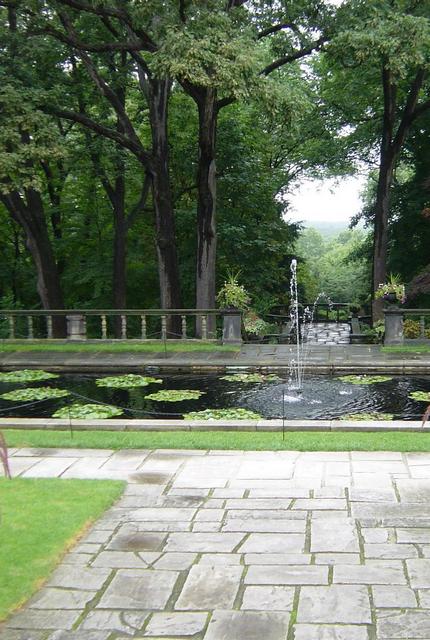
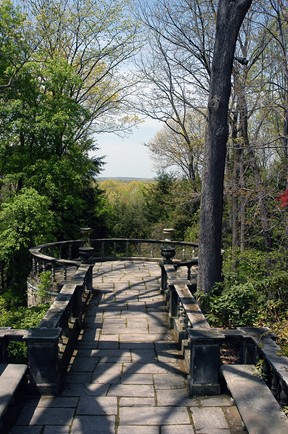
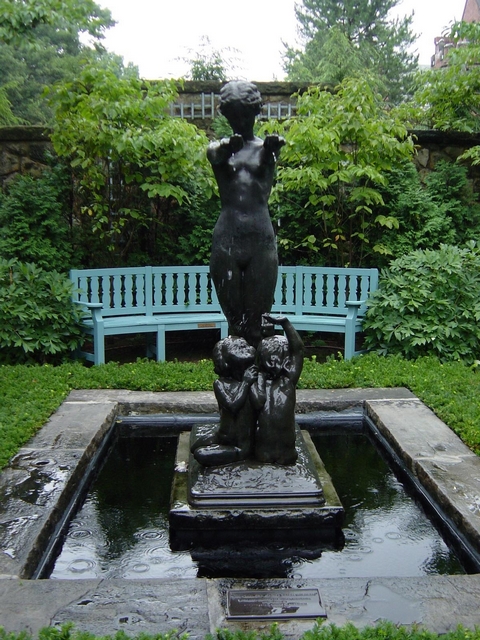

At Stan Hywet Hall a new positive receptiveness to Gilded Era taste has seen elements as detested as canvas awnings and Virginia creeper restored along with altered landscapes and a long lost greenhouse. As at the Frick, the continuity of descendants of the donor among the trustees who are only slightly less assertive than their important forbear has been decisive.
This was a bulwark against challenges to his intentions that the childless Barnes lacked.
"Contracts can be broken, wills challenged, legacies dismantled. And in the years after Barnes' death, the collection became the focus of a fascinating fight among an array of interests. Much of the louder part of the battle involved its location: some wanted it to stay put, thereby honoring Barnes' wishes. Others wanted it moved to Philadelphia, where it would be more accessible and, of course, could become a desirable, lucrative tourist attraction,"
asserts Dargis in the Times.
All too aware of how treachery is an equal-opportunity defect, none-the-less, as an African American, I still feel especially saddened by the pivotal role blacks played in implementing this tragedy. Have we no honor, no sense of duty, beyond the short-term pittances or self-serving deals with piddling pay-offs? Of course former Philadelphia mayor John F. Street and Barnes Foundation president Richard Glanton only mimicked the sordid deeds of whites like Pennsylvania's 'bullish' governor, Edward G. Rendell, the Hon. Walter Annenberg and Pew Charitable Trust officers, to name just a few.
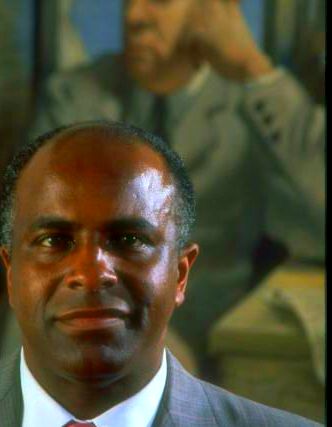
Giddy with the entree and notice his position lent him, Glanton set the Barnes' demise in motion, however. Oblivious to the foundation's ability to enhance Lincoln University academically, like a real-life character from an August Wilson drama, he saw only the blinding dazzle of dollar signs. Claiming that extensive repairs to the aging Barnes' gallery were imperative, he set about breaking key terms of the foundation's indenture. From 1993 to 1995, he sent a selection of 83 French Impressionist paintings to be exhibited on a world tour, the proceeds of which were to pay for these 'over-due renovations'. The works attracted large crowds in numerous localities.
In retaliation for his dismissal as the foundation's head, Glanton leaked evidence of Lincoln's president's extremely lavish home-decorating projects, which ultimately revealed various misappropriations of university funds. Taken together such minor venalities by ambitious blacks made them ripe for manipulation: initially being co-opted and finally, being replaced and disregarded. With such easy marks, maneuvering to relocate the Barnes Foundation to Philadelphia amounted to child's play.
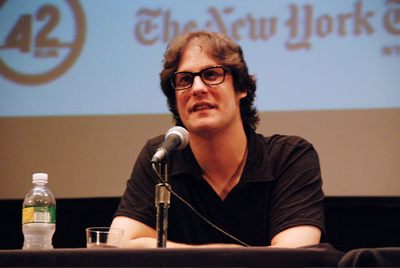
If Don Argott doesn't feign disinterest in The Art of the Steal, then neither do I. How is it legal, in America, to accept someone's gift, only to discard their expressed wishes as to the gift's disposition? Whether in Cleveland, Boston or Philadelphia, such actions may be possible, and might even, for a while, be able to be 'legalized', but they are always immoral just the same. In the case of the Barnes, the engineering of this process having been largely accomplished through the connivance of several large and bountiful foundations, philanthropist Lewis B. Cullman's idea seems to be the ideal prescription: charitable foundations ought to be mandated by law to disperse their assets in no longer a span than a human lifetime.
